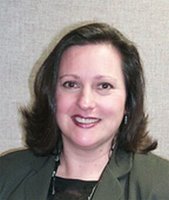The National Institute for Drug Abuse (NIDA) has followed up its groundbreaking "
Principles of Effective Drug Abuse Treatment" (1999) with a similar work that addresses issues of treatment behind bars. Titled "Principles of Drug Abuse Treatment for Criminal Justice Populations" and available
online, the report is worthwhile reading for anyone concerned with the huge number of people incarcerated in connection with drug and alcohol use.
NIDA's earlier report highlighted the importance of an individualized approach to treatment. Its number one finding was: "
No single treatment is appropriate for all individuals. Matching treatment settings, interventions, and services to each individual's particular problems and needs is critical to his or her ultimate success in returning to productive functioning in the family, workplace, and society. "
What holds for addiction treatment on this side of the bars is also true on the inside. The current report says, as point five, "
Tailoring services to fit the needs of the individual is an important part of effective drug abuse treatment for criminal justice populations. Individuals differ in terms of age, gender, ethnicity and culture, problem severity, recovery stage, and level of supervision needed. Individuals also respond differently to different treatment approaches and treatment providers." In other words, effective treatment behind bars requires much the same basic respect for individual differences as treatment anywhere else.
Notable also is NIDA's growing recognition of the importance of patient involvement. "Effective drug abuse treatment engages participants in a therapeutic process," the report says, which suggests that getting patients involved in designing and planning their own treatment process promotes therapeutic engagement.
Although NIDA stops short of recommending any specific treatment modality, its research clearly points toward secular and broadly behaviorist approaches. The report says, "In general, drug treatment should address issues of motivation, problemsolving, skill-building for resisting drug use and criminal behavior, the replacement of drug using and criminal activities with constructive nondrug using activities, improved problemsolving, and lessons for understanding the consequences of one’s behavior."
In an accompanying op-ed piece, NIDA director Nora Volkow makes a strong case that treatment for drug-abusing offenders is more effective than incarceration without treatment, and that effective treatment, if it were available, could make a major dent in the crime rate and in the prison population.
Source. Needless to add, as incumbent head of a major government department (NIDA is a part of the National Institutes of Health which is part of the Department of Health and Human Services), Volkow is silent on the issue of fading federal spending for treatment, other than faith-based approaches (see
earlier blog) -- policies that run directly counter to the research that underlies NIDA's report.
 Dr. Karen Wheeler, addictions policy manager in the Oregon Department of Human Services, has been listening. She says that treatment shouldn't be a frightening experience, and it shouldn't make you feel more worthless than you already feel.
Dr. Karen Wheeler, addictions policy manager in the Oregon Department of Human Services, has been listening. She says that treatment shouldn't be a frightening experience, and it shouldn't make you feel more worthless than you already feel.








